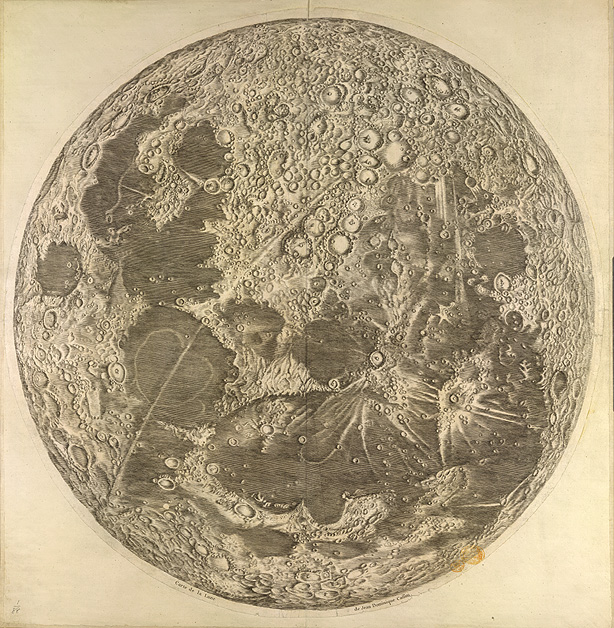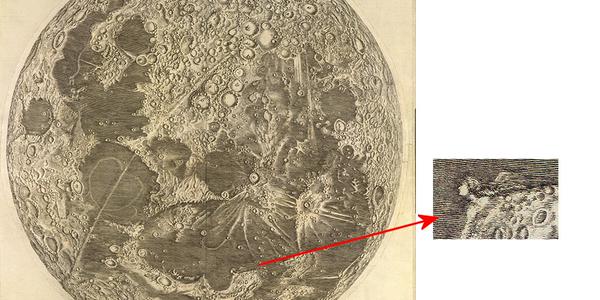Millions watched as astronaut Neil Armstrong put boots to the moon in 1969.
It was, as he famously remarked, one “giant leap for mankind,” but from a scientific standpoint the territory was far from virgin.
Nearly 300 years earlier, engineer Giovanni Domenico Cassini, astronomer to Sun King Louis XIV, made lunar history in 1679, when he published the first scientific map of the moon, above.
Needless to say, the event was not televised and Cassini never had the opportunity to walk on the surface he studied. Instead he observed it through the eyepiece of a telescope, a relatively new invention.
His predecessors, including Galileo, used the then-revolutionary tool to delve deeper into their own lunar obsessions, making sketches and performing experiments designed to replicate the craters they noticed in the moon’s crust.
Cassini, then eight years into his forty year career as Director of the Paris Observatory, produced a map so exhaustive, it provided his peers with far more details of the moon’s surface than they had with regard to their own planet.
He also used his powers of observation to expand human understanding of Mars, Saturn, and France itself (which turned out to be much smaller than previously believed).
A man of science, he may not have been entirely immune to the sort of moon-based whimsy that has long infected poets, songwriters, and 19th-century romantic heroines. Hiding in the lower right quadrant, near Cape Heraclides on the Sinus Iridum (aka Bay of Rainbows), is a tiny, bare-shouldered moon maid. See right above.
Or perhaps this appealingly playful vision can be attributed to Cassini’s engraver Claude Mellan.
Either way, she seems exactly the sort of female life form a 17th-century human male might hope to encounter on a trip to the moon.
via Pickover Reality Carnival
Related Content:
Free Online Astronomy Courses
Galileo’s Moon Drawings, the First Realistic Depictions of the Moon in History (1609–1610)
The Birth of the Moon: How Did It Get There in the First Place?
Ayun Halliday is an author, illustrator, and Chief Primatologist of the East Village Inky zine. Follow her @AyunHalliday




Leave a Reply